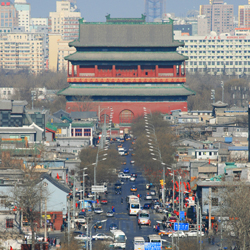Experienced Investor
Time to buy Asia as China’s central bank turns on the tap?

Asian stocks have been largely ignored this year as investors take stock of positions and eye potential shifts in policy from central banks, but multi-managers are now upping their exposure amid a strong rally.
China, the world’s second-largest economy, has seen stocks surge since May, with the IMA China sector returning 21.6 per cent in the four months to 11 September 2014, according to FE. The IMA Asia ex-Japan index has followed a similar trajectory, with returns of 13.5%.
A 500 billion yuan (£50bn) stimulus package unveiled this week could also prove supportive of asset prices in the country.
In the face of rising markets, managers have become increasingly concerned about other emerging markets, and are now skewing their portfolios to Asia in the expectation the rally continues.
Henderson’s multi-manager team moved from an underweight in Asian equities to an overweight last month. Multi-manager James de Bunsen said: “This was mainly based on relative valuations and an upturn in Chinese macro data.
“As well as increasing our regional exposure we also added Korean equities. This followed tax reforms to encourage dividend payments, which are very low in Korea, and fiscal and monetary stimulus.”

Why Life Insurance Still Matters – Even During a Cost-of-Living Crisis
Sponsored by Post Office
Retail investors are also following. Asian equity funds were the second best-selling region in July, according to Investment Management Association figures, and while the previous 12 months saw net outflows of £33m, this trend reversed in July, with £203m of inflows reported.
As well as seeking exposure to China, managers see Asian equities in general as preferable to buying into a wider emerging markets fund.
Société Générale Private Banking Hambros reduced exposure to emerging markets in the spring, but has returned to Asia again.
Chief investment officer Eric Verleyen said: “People are still nervous about what is happening in Brazil.
“They are not really willing to invest in South America apart from Mexico, where it is more related to the US. Then you have the conflict in Europe with Russia and Ukraine.
“If you look at Asia, you have the Chinese engine working well again, and all the countries are benefiting from it, especially places like Korea with its exposure to technology and US growth.”
F&C multi-manager co-head Gary Potter has also recently moved overweight Asia and neutral on emerging markets.
He said the market has further to run: “We think China will muddle through. It has got financial resources.”
However, JO Hambro Capital Management Asia ex-Japan fund manager Samir Mehta highlighted some of the challenges facing Asia.
He said China’s transition to a consumption-led economy is likely to be “over a generational timeframe,” and not something investors can exploit in the short-term.
